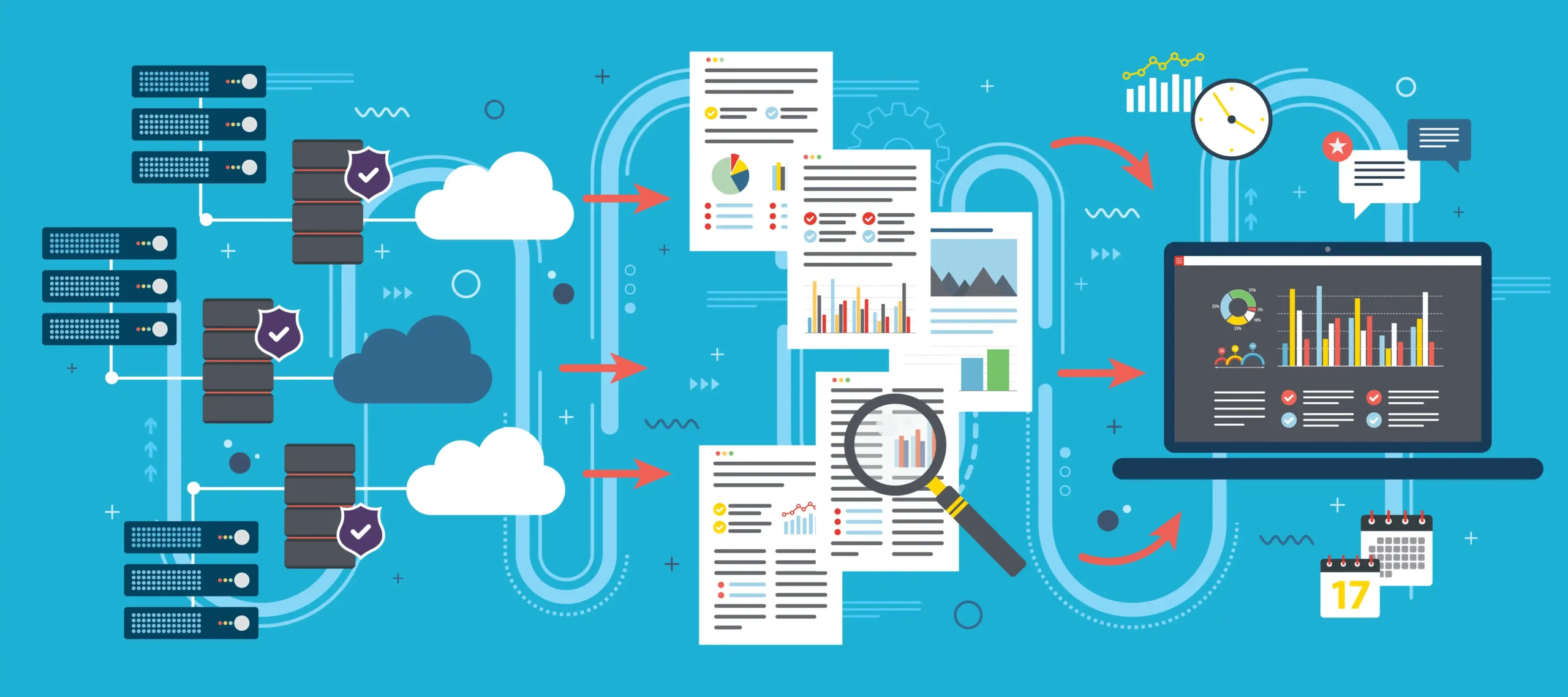
What Is a Cloud Migration Strategy and Why Do You Need One?
By Thayer Tate
55% of people continue to use traditionally managed on-premise systems. To remain competitive, businesses must view technology investments, like migrating to the cloud, as a strategic advantage. However, properly migrating to the cloud requires a thorough cloud migration strategy.
Developing a cloud migration strategy offers significant benefits, including cost efficiency—cloud computing saves companies 20% annually on infrastructure costs—and access to advanced technologies. This article will explore the key components of a cloud migration strategy and explain why it is crucial for modern businesses to adopt.
What Is a Cloud Migration Strategy?
A cloud migration strategy acts as a framework that establishes how an organization will move its applications, data, and workloads to the cloud from on-premise infrastructure.
Benefits of a Cloud Migration Strategy
Implementing a cloud migration strategy offers a number of benefits, including:
- Minimized Downtime: Cloud migration strategies ensure a smooth transition to the cloud, lessening the chance of disruptions and downtime.
- Cost Efficiency: By making a cloud migration plan, you can pinpoint the most cost-effective cloud solutions for your organization and avoid spending on ancillary services.
- Risk Mitigation: With a cloud migration strategy, you can identify potential challenges of transitioning ahead of time and put measures in place to mitigate the identified hurdles.
- Informed Decision-Making: A cloud migration strategy can help you choose which cloud services and providers align best with your business needs.

What Are the Different Types of Cloud Migration Strategies?
When thinking about your platform migration strategy, understanding the various tactics available is crucial to making an informed decision that aligns with your business goals. Below are 4 cloud migration services you should know about that can fit the needs and circumstances of your cloud migration strategy.
1. Rehost in the Cloud
Known as “lift and shift,” rehosting moves applications from your on-premises environment to the cloud with minimal changes. This strategy is ideal for organizations looking for a quick transition with the immediate benefits of cloud infrastructure, such as scalability and flexibility, without altering the existing code.
2. Optimizing for the Cloud
This approach involves making a few cloud-optimizing changes without altering the core architecture of applications. This can include updating the operating system, replacing database services, or leveraging cloud-managed services to enhance performance and efficiency.
3. Rearchitecting for the Cloud
Rearchitecting requires reimagining how applications are built to take full advantage of cloud-native features. This strategy is typically more complex and time-consuming but can improve agility, scalability, and performance. It’s a good choice for organizations looking to innovate and fully leverage cloud capabilities.
4. Upgrade Vendor App to Cloud Version
This approach is relevant to applications licensed by vendors and involves moving from a traditional software license to a cloud-based version of the application, such as switching from a self-hosted CRM to a SaaS solution. By adopting a subscription-based model and offloading maintenance responsibilities to the service provider, businesses that use this strategy can simplify management and reduce costs.
When Do You Need to Migrate to the Cloud?
Many organizations that host their own applications regularly ask this question. As is always the case when developing a cloud migration strategy, here are a few factors you should consider:
Leases on Hardware or Data Centers Coming to an End
At face value, this is purely about cost. However, it may be the impetus that drives a serious look at the advantages of leveraging specific, relevant cloud migration services.
Challenges of a Rigid Infrastructure
If your current infrastructure makes it difficult to change environments and options regarding technology choices are limited or challenging to adopt, it may be time to put your cloud migration strategy into effect.
The Current Infrastructure Has Become Fragile
When meetings become discussions on whether the infrastructure can support something due to age, use case, possible points of failure, etc., a platform migration strategy may be the best course of action.
Business Processes Are Hindered
Applications are invested in, built, and deployed to advance business operations, revenue, efficiency, etc. The quicker you can deliver an application, the more competitive advantage you have—and we aren’t working in months and quarters anymore. It’s all about weeks and days.
This requires well-coordinated services and configuration management. Often, an outdated, on-premise infrastructure can impede the agility of application releases. If you feel like your on-premise infrastructure is holding your business back, implementing a cloud migration strategy may be in your best interest.
Cyclical User Demand
Many applications are cyclical in use. Applications may have peaks at certain times of day, at the end of the month, or for a season. Conversely, these same applications may have extended slow periods relative to their peaks.
To account for these peaks and valleys, your infrastructure must have elasticity—the ability to scale up and down based on usage. Building an infrastructure to handle peaks often leaves a lot of hardware idle during slow periods. Overprovisioning for the peaks can become a costly endeavor. So, investing in cloud migration services may be a solution that can help account for the variability in usage.
How to Create a Cloud Migration Strategy
Here’s a broad overview of what you need to develop your cloud migration strategy.

1. Define Your Cloud Migration Goals and Objectives
The first step in creating a cloud migration strategy is to define the organization’s goals and objectives, which involve:
- Defining the business drivers behind the migration: Explain the key reasons for migrating to the cloud, such as scalability, flexibility, or reduced maintenance burden to guide and direct the rest of the planning process.
- Identifying the applications and data to be migrated: Determine which critical applications and data sets need to be prioritized for migration.
- Determining the desired outcomes of the migration: Establish clear objectives such as improved performance, cost savings, or enhanced security that can be measured to validate success.
2. Assess Your Current Infrastructure
Before beginning your cloud migration strategy, it is essential to inventory assess the current infrastructure. This includes:
- Evaluating the existing applications and workloads: Inventory the current infrastructure components, applications, and workload. Take stock of their performance, dependencies, and resource requirements.
- Identifying dependencies and interconnections: Map out the relationships between different applications and systems for a smooth migration.
- Assessing the resource types, performance, and capacity requirements: Determine the necessary resources, computing power, storage, and network capacity needed in the cloud environment.
You should also review current build and deployment documentation and knowledge bases while looking for gaps. Gaps may be found while executing the migration, but taking the time to review the current state will minimize surprises. It’s important to note that knowledge gaps are often not documented. Independent of the migration effort, uncovering the unknowns will be an asset to the organization and the cloud migration strategy.
3. Choose the Right Cloud Service Provider
Selecting the appropriate cloud service provider is a critical component of a cloud migration strategy. Consider the following factors:
- Service offerings and capabilities: Evaluate the range of cloud services and features different providers offer to meet your specific needs.
- Pricing and cost structures: Compare pricing models and cost structures to find the most cost-effective solution for your organization.
- Support and service level agreements (SLAs): Review the level of support and SLAs provided to guarantee reliable and responsive service.
On top of that, understanding current security and regulatory requirements and ensuring activities are audited as required is important to a successful platform migration strategy. Any auditing provided by the application would remain unchanged. However, any type of auditing or tracing outside an application’s scope should be accounted for.
4. Develop a Cloud Migration Project Plan
Developing a detailed cloud migration project plan is essential for a successful migration. The strategy should include:
- Timelines and milestones for each phase of the migration: Establish a clear timeline with specific milestones to track progress and make sure work gets completed on time.
- Resource requirements, including personnel, technology, and budget: Identify the necessary resources, including skilled personnel, technology tools, and budget allocations.
- Risk management and mitigation strategies: Develop strategies to identify, assess, and mitigate potential risks during the migration process.
Additionally, the plan should outline the processes for:
- Data migration and synchronization: Define the methods and tools for transferring data to the cloud while ensuring data integrity and consistency.
- Application strategies: Choose which of the 7 Rs you will use to migrate applications.
- Testing and validation of migrated workloads: Establish a testing and validation process to ensure that migrated workloads function correctly in the cloud environment.
5. Monitor and Optimize Post-Migration
Once the migration is complete, it is crucial to monitor and optimize the cloud environment. This involves:
- Continuously monitoring performance and usage: Implement monitoring tools to track performance metrics and resource usage in real time.
- Identifying and addressing any issues or bottlenecks: Proactively identify and resolve performance issues or bottlenecks to maintain optimal performance.
- Optimizing resource allocation and cost management: Regularly review and adjust resource allocation to optimize costs and ensure efficient use of cloud resources.
Additionally, educating those responsible for the various aspects of cloud deployment is key. To maintain the integrity of an application, keep costs under control and service application users. Investing in team education is not only a wise investment but also foundational to the migration’s success.

Migration Strategies by Platform
There are several platforms you can use to host your cloud migration strategy. However, the three biggest players in the cloud game are Google, Azure, and AWS, making up 66% of the total cloud market. Here’s a summary of how to begin your migration to these platforms.
Azure Migration Strategy
Microsoft Azure is the second leading cloud infrastructure platform with a 25% market share. Migrating to Microsoft Azure involves a series of well-planned steps to ensure a smooth transition. Here’s a summary of the key steps to build your cloud migration strategy:
Define Cloud Migration Goals
Identify your motivations for migrating to the cloud, such as cost reduction, regulatory compliance, or scaling capabilities. This helps establish strategic migration goals and tailor a migration path suitable for your workloads.
Understand Your Digital Estate
Use the Azure Migrate: Discovery and Assessment tool to identify your on-premises infrastructure, applications, and dependencies. This includes collecting metadata, performance data, and application inventory to understand your current environment and plan optimizations.
Assess Migration Readiness
Evaluate your workloads for Azure readiness by categorizing them as ready, conditionally ready, not ready, or unknown. Use database assessments to understand SQL Server readiness and get sizing recommendations for Azure VMs and databases.
Finalize the Migration Plan
Develop a detailed cloud migration plan, considering network requirements, downtime constraints, and training needs. Use Azure Migrate assessment reports to prioritize workloads, focusing on quick wins and compliance requirements. Prepare for potential blockers and ensure organizational readiness through training and support.
Migrate
Start with a test migration using Azure Migrate to identify and fix any potential issues. When ready, use the Migration and Modernization tool and Azure Data Migration Service (DMS) for a seamless, end-to-end migration experience. Consider using the Azure Migrate OS upgrade option to upgrade Windows Server OS during migration.
AWS Cloud Migration Strategy
AWS is the largest of the three platforms, holding 31% of all cloud infrastructure services. Migrating to AWS involves a three-phase iterative process designed to help organizations transition thousands of applications. Here’s a summary of the key steps for an AWS cloud migration strategy.
Assess
In the assessment phase, evaluate your organization’s readiness for cloud migration. Identify business outcomes, build a migration business case, and assess on-premises resources to optimize cost projections for running applications in AWS. Key tools and programs include:
- AWS Optimization and Licensing Assessment (OLA): Helps optimize current environments and reduce licensing costs.
- Migration Evaluator: Provides data-driven recommendations for right-sizing and cost optimization.
- AWS Migration Acceleration Program (MAP): Offers tools, training, partner expertise, and AWS investment to streamline the migration process.
Mobilize
In the mobilization phase, create a migration plan and address any gaps identified during the assessment. This includes setting up your baseline environment (landing zone), ensuring operational readiness, and developing cloud skills. Key services include:
- AWS Application Discovery Service: Gathers information about on-premises data centers to plan migrations.
- AWS Migration Hub: Automates planning and tracking of migrations across multiple tools.
- AWS Landing Zone and AWS Control Tower: Set up secure, multi-account AWS environments to manage resources during and after migration.
Migrate and Modernize
During this phase, design, migrate, and validate each application. Utilize AWS services and migration partners to facilitate the process. Key services include:
- AWS Migration Hub: Centralizes tools for migration and modernization.
- AWS Application Migration Service (AWS MGN): Simplifies migration from physical, virtual, and cloud infrastructure using continuous data replication.
- AWS Database Migration Service (DMS): Migrates data between various database platforms with high availability.
- VMware Cloud on AWS: Enables quick relocation of applications virtualized on vSphere to the AWS Cloud.
- AWS Managed Services (AMS): Manages AWS operations post-migration, including monitoring, patch management, and backup services.
Google Cloud Migration Strategy
The Google Cloud is the third largest cloud infrastructure platform, holding an 11% market share. Here is how Google recommends implementing a cloud migration strategy to their platform.
Define Environment
Start by defining the environments involved: on-premises, private hosting, or another public cloud. On-premises environments offer full control over physical security and infrastructure, private hosting involves shared management with control over virtual resources, and public cloud environments provide managed infrastructure with a focus on workloads.
Define Workloads
Next, identify the types of workloads to migrate, categorized as either legacy or cloud-optimized. Legacy workloads, developed without cloud considerations, are often costly and difficult to maintain. Cloud-optimized workloads are natively scalable, portable, and secure, enhancing developer productivity and operational efficiency.
Depending on your starting environment and workload type, choose from one of the migration strategies outlined earlier. The migration journey to Google Cloud involves four key phases:
- Assess: Conduct a thorough assessment of your existing environment, identify app dependencies, calculate the total cost of ownership, and establish performance benchmarks.
- Plan: Create the basic cloud infrastructure, plan the migration, develop identity management, project structure, and a prioritized migration strategy.
- Deploy: Implement and execute the deployment process, refine infrastructure as needed, and ensure smooth workload transfer.
- Optimize: Fully utilize cloud-optimized technologies for enhanced performance and scalability, and explore opportunities for integrating machine learning and AI.
Find a Cloud Migration Services Partner
If you need help building and implementing your cloud migration strategy, you can rely on SOLTECH. We design for the cloud with experience, expertise, and resources so your next cloud-based application is a success. Contact us to get started migrating your data and applications to the cloud.
Thayer Tate
Chief Technology Officer Thayer is the Chief Technology Officer at SOLTECH, bringing over 20 years of experience in technology and consulting to his role. Throughout his career, Thayer has focused on successfully implementing and delivering projects of all sizes. He began his journey in the technology industry with renowned consulting firms like PricewaterhouseCoopers and IBM, where he gained valuable insights into handling complex challenges faced by large enterprises and developed detailed implementation methodologies.
Thayer is the Chief Technology Officer at SOLTECH, bringing over 20 years of experience in technology and consulting to his role. Throughout his career, Thayer has focused on successfully implementing and delivering projects of all sizes. He began his journey in the technology industry with renowned consulting firms like PricewaterhouseCoopers and IBM, where he gained valuable insights into handling complex challenges faced by large enterprises and developed detailed implementation methodologies.
Thayer’s expertise expanded as he obtained his Project Management Professional (PMP) certification and joined SOLTECH, an Atlanta-based technology firm specializing in custom software development, Technology Consulting and IT staffing. During his tenure at SOLTECH, Thayer honed his skills by managing the design and development of numerous projects, eventually assuming executive responsibility for leading the technical direction of SOLTECH’s software solutions.
As a thought leader and industry expert, Thayer writes articles on technology strategy and planning, software development, project implementation, and technology integration. Thayer’s aim is to empower readers with practical insights and actionable advice based on his extensive experience.



